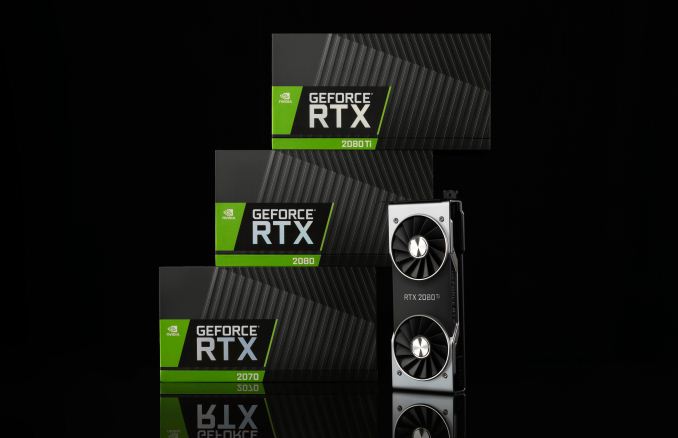The NVIDIA Turing GPU Architecture Deep Dive: Prelude to GeForce RTX
by Nate Oh on September 14, 2018 12:30 PM ESTClosing Thoughts
With a tagline like ‘Graphics Reinvented’, NVIDIA is certainly not straying from putting Turing in the most revolutionary limelight as possible. In that sense, NVIDIA is choosing to compare Turing to Pascal rather than Volta for every possible circumstance, especially for gaming. This decision is certainly not unfounded because for consumers, the Turing-based GeForce 20-series succeeds the Pascal-based GeForce 10-series. However, this can give the impression that because Turing is so different from Pascal, it warrants dissimilar comparisons like RTX-OPS metrics or gaming performance uplifts with DLSS or raytracing enabled.
The situation becomes a little more muddled because of several reasons:
- The pricing and availability of the RTX 20-series means that on a purely market segmentation level, it does not directly replace Pascal gaming products
- As gaming-focused cards, the major new features (RT cores, tensor cores, advanced shading) of the RTX 20-series do not operate out-of-the-box in games, are specific to select games, and
- The burden of communication is on the developers to educate consumers on the details of specific raytracing effects or use of AI-accelerated denoisers
These aren’t points that necessarily need to define Turing, except that NVIDIA has pushed the envelope by going all-in with marketing and branding. For their part, NVIDIA will have an continously updated list of games with RTX platform support.
On one hand, Turing seems like a possible solution to the gaming/compute architecture divergence. It seems less likely now that NVIDIA would backtrack into a more standard design for maximum rasterization performance, though obviously that remains to be seen with how the product fares. In any case, as most silicon design firms hvae leapfrogging design teams, the major decisions are likely not to move too far to the fixed function side, if only because the greatest strength of GPUs in compute is its programmability and versatility.
Looking back at ray tracing, it seems that even if it isn't immediately practical, there would still be a seeding effect to be gained via enthusiasts and certain gamers, which would work well with higher-profile AAA games. As we move into next week, it appears that the GeForce RTX 20-series is definitely one of the more nuanced graphics products, with both caveats and potential.

















111 Comments
View All Comments
Yojimbo - Saturday, September 15, 2018 - link
Of course he meant giga as in billion. Of course it's simple. But where did you see "gigarays/sec" before? You didn't. So as far as you know, it is an NVIDIA-made term.He said it that way because it's easier to talk about it that way, and because NVIDIA is making a marketing term out of it. And he introduced it with a joke.
edzieba - Saturday, September 15, 2018 - link
'Gigs' is an SI prefix. You put it in front of any unit to indicate 10^9 of that unit.eddman - Saturday, September 15, 2018 - link
Why does it even matter?! As I pointed out, I meant to write "rays/sec". I forgot to take out the giga part after copy/paste.I'm pretty sure a lot of ray tracing developers have uttered the words "giga rays" before jensen.
markiz - Monday, September 17, 2018 - link
Well car makers are also using kilowatts for engines. Bastards.Yojimbo - Saturday, September 15, 2018 - link
Where do you get these die area estimates from?edzieba - Saturday, September 15, 2018 - link
If you compare scaled die shots of Turing to Pascal (GP102), isolate an SM, and assume each CUDA core occupies the same die area, then the combination of Tensor and RT cores takes around 24% die area. This is more of an upper bound, as the CUDA cores are likely to be larger due to the concurrent execution capability, there is more space in the SM taken by memory, and more uncore taken by the NVLink interfacesYojimbo - Saturday, September 15, 2018 - link
Where are these die shots? Paste them? I think that people are looking at schematics, not die shots.edzieba - Saturday, September 15, 2018 - link
Nvidia posted them (surprisingly correctly scaled) as part of the Turing unveil presentation.Yojimbo - Saturday, September 15, 2018 - link
Can you link me to them and to an analysis of them?808Hilo - Sunday, September 16, 2018 - link
So far 10% better than 1080ti and 15% over 1080. Really not worth it. Better spend money on MB, new chip, ram and fast SSD if coming from an older PC.